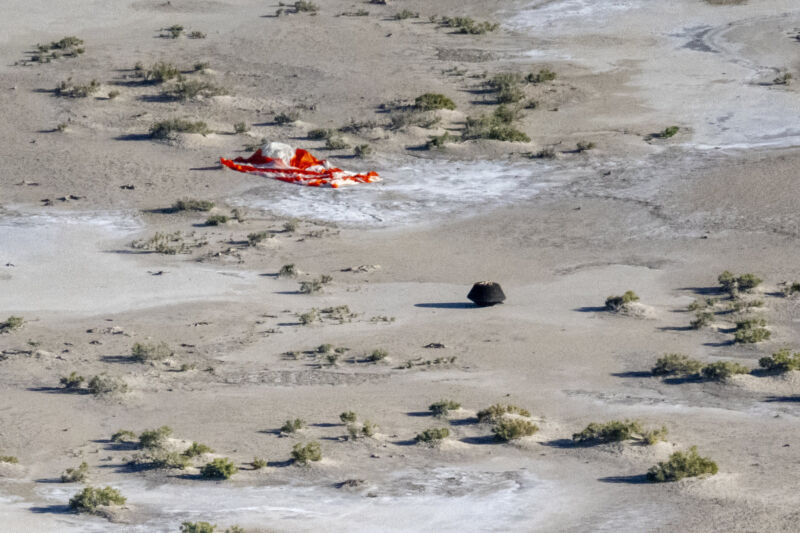
Enlarge / The OSIRIS-REx sample return capsule, with its main parachute nearby, shortly after landing in Utah on September 24, 2023. (credit: Keegan Barber/NASA)
This was the moment Dante Lauretta had waited for nearly 20 years to see. A small robotic capsule was on the way back to Earth with rocks scooped from an asteroid, and Lauretta was eager to get his hands on the samples.
Led by Lauretta, scientists carefully designed the billion-dollar mission to bring home pieces of a carbon-rich asteroid thought to contain organic molecules, the building blocks necessary for life to take hold. This NASA mission, known by the acronym OSIRIS-REx, launched from Earth in 2016, collected samples from a roughly 1,600-foot-wide (500-meter) asteroid named Bennu in 2020, then set a course for return to Earth.
On September 24, the OSIRIS-REx spacecraft released the canister containing the asteroid samples to plunge into the Earth's atmosphere, while the mothership steered onto a course to take it safely back into deep space for a follow-up mission to explore a different asteroid at the end of the 2020s.